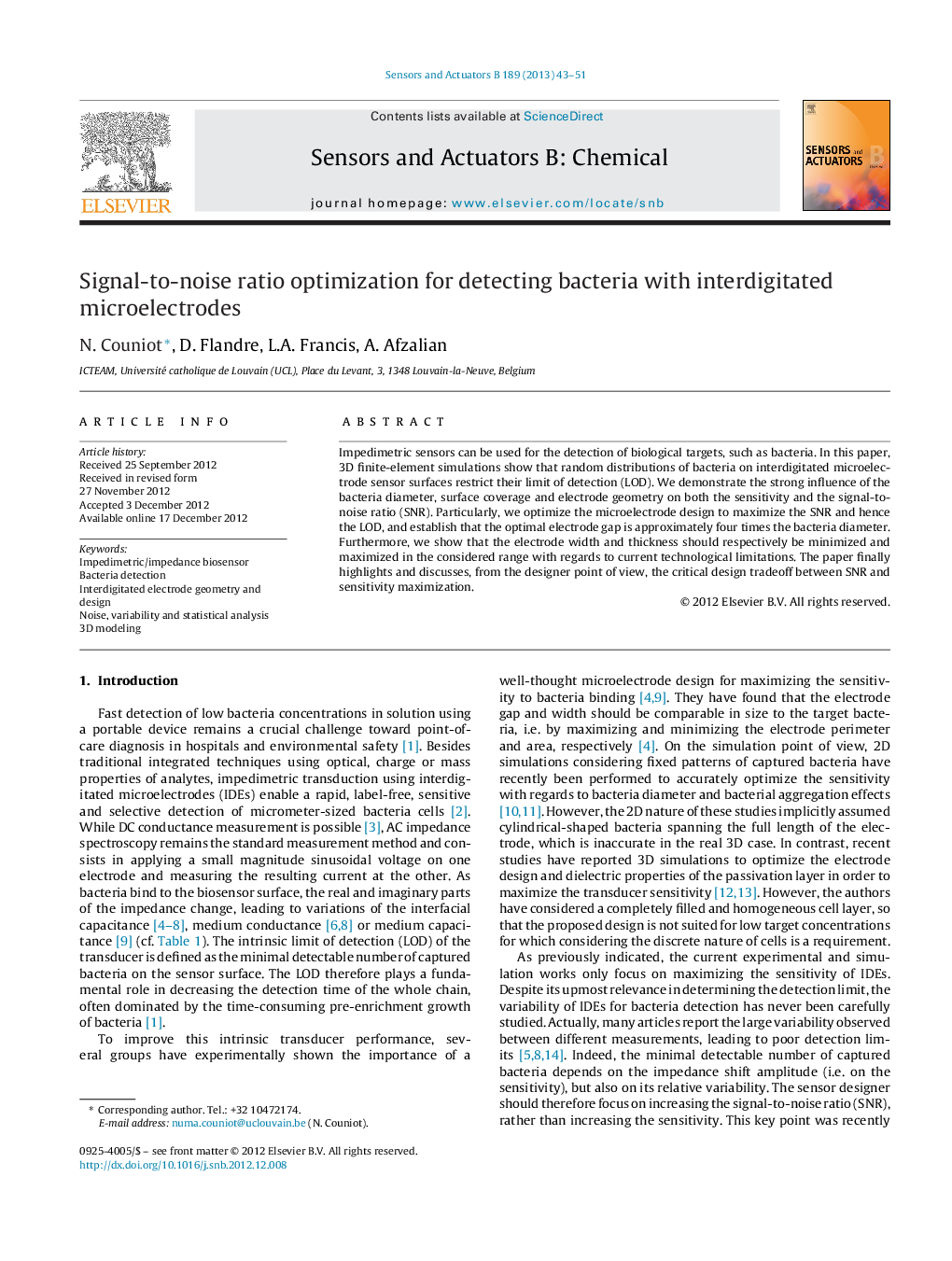| Article ID | Journal | Published Year | Pages | File Type |
|---|---|---|---|---|
| 740202 | Sensors and Actuators B: Chemical | 2013 | 9 Pages |
Impedimetric sensors can be used for the detection of biological targets, such as bacteria. In this paper, 3D finite-element simulations show that random distributions of bacteria on interdigitated microelectrode sensor surfaces restrict their limit of detection (LOD). We demonstrate the strong influence of the bacteria diameter, surface coverage and electrode geometry on both the sensitivity and the signal-to-noise ratio (SNR). Particularly, we optimize the microelectrode design to maximize the SNR and hence the LOD, and establish that the optimal electrode gap is approximately four times the bacteria diameter. Furthermore, we show that the electrode width and thickness should respectively be minimized and maximized in the considered range with regards to current technological limitations. The paper finally highlights and discusses, from the designer point of view, the critical design tradeoff between SNR and sensitivity maximization.
